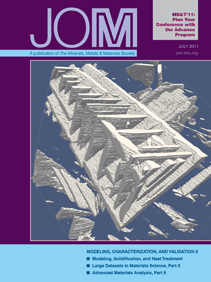 |
TMS
ONLINE | TMS
PUBLICATIONS | SITE
MAP JOM Material Matters Articles in Full-Text Format: June 2004 |
|
|
|
|
Exploring traditional, innovative, and revolutionary issues in the
minerals, metals, and materials fields.
|
|||||
| OUR LATEST ISSUE | |||||
|
VISIT THE JOM COVER GALLERY
|
Understanding “Related” U.S. Patent ApplicationsDavid V. RadackRelated patent applications are those filed after an initial original application is filed but before it is issued as a patent and that involve similar or related technologies. For example, an inventor may come up with an improvement to technology disclosed in an earlier filed application. Instead of filing a new patent application for the improvement, the patent laws allow the inventor to supplement the earlier application by filing a continuation-in-part (CIP). A CIP is just one of the several types of related applications. DIVISIONAL APPLICATIONS
Divisional applications are slightly different than continuation and CIP applications in that they most often spring from the same originally filed application. In a fair number of patent applications, an examiner at the United States Patent and Trademark Office (USPTO) will determine that a single-filed application will contain more than one invention. For example, one patent application may contain one set of claims directed toward a novel aluminum alloy and another set of claims directed toward a novel method of making the novel aluminum alloy. Even though these claims are broadly related to the same technology, an examiner may determine that each set of claims represents independent and distinct inventions and requires a different scope and range of searching. Thus, in order to compensate the USPTO for, in effect, double the work for one filing fee, the examiner will issue what is known as a restriction requirement, requiring the applicant to choose between the sets of claims as to which set the examiner will search and examine in the originally filed application. Although on its surface this rule seems like just a way for the USPTO to obtain more filing fees from applicants, there is an element of fairness in that inventors could abuse the patent system by cramming into a single application several unrelated inventions and getting a single patent covering multiple inventions by paying a single filing fee. CONTINUATION APPLICATIONSContinuation applications involve filing a patent application based on an earlier filed patent application wherein there is no new disclosure, but which may contain different claims. The most common situation where this occurs is when an applicant is having some difficulty in prosecuting the original claims because the examiner keeps rejecting them. Generally an applicant gets one chance to amend the original claims and if that is unsuccessful, the applicant must appeal the examiner’s rejection to the Board of Patent Appeals and Interferences. The board is a panel of three supervisory patent examiners who will take a fresh look at the case. For many practical and strategic reasons, one may want to avoid appealing the case to the board. This is where the continuation application finds its most prevalent use. CONTINUATION-IN-PART APPLICATIONS
Continuation-in-Part applications are used in the situation mentioned previously where, after the original application is filed, a new improvement is conceived or developed. The CIP thus consists of the originally filed and claimed invention and the newly disclosed and claimed invention. The originally filed material carries a first-priority date but the newly disclosed material has a priority date that corresponds to the date of filing of the CIP. It is crucial to remember that a CIP can only be filed based on a pending application. That is, once the original application is issued, CIPs cannot be filed claiming the benefit of the originally filed patent application which has material into the issued patent.
|
Copyright © 2004 by The Minerals, Metals & Materials Society.
Direct questions about this or any other JOM page to jom@tms.org.
Search TMS Document Center Material Matters Contents JOM TMS OnLine
